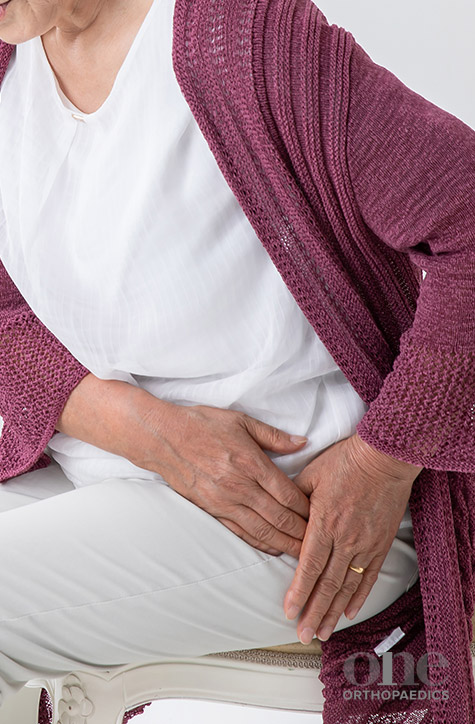What is it?
The hip is a ball-and-socket joint that normally moves freely, allowing good function and physical mobility. Femoroacetabular impingement (FAI) occurs when the socket or ball part of the joint are abnormally shaped. This causes the bones of the two parts of the joint to impinge or rub against each other during movement of the joint, particularly when flexing the hip. This abnormal rubbing of bones causes joint damage, often starting with the cartilage margin of the socket (the labrum), and going on to damage the smooth articular cartilage lining the joint. This can often lead to hip osteoarthritis, and the need for hip replacement surgery.
Why does it occur?
The two main causes of hip impingement are:
Athletes are more likely to develop pain as a result of impingement, as the joint is subject to more stress and put through a greater range of movement than normal day-to-day activities.
What are the symptoms?
Symptoms can include pain within the groin, or on the outside of the hip, and the lower back, leading to a gradual reduction in the ability to exercise. Sharp pains can often be felt when twisting, flexing the hip, or getting up from a chair.
How is it diagnosed?
Your specialist will take a full history and do a formal examination of your hip joints but often imaging such as x-rays, a CT or MRI scan are used in order to look at the severity and pattern of impingement and find any subsequent damage that has been caused such as labral tears.
How is it treated?
Non-surgical treatment
This will involve lifestyle modification, including avoiding activities that aggravate the symptoms, along with analgesia, including anti-inflammatory medication. A physiotherapy-led rehabilitation regime may also be recommended.
An x-ray guided hip injection, using steroid or hyaluronic acid, may settle symptoms for long periods of time, and is sometimes required to confirm whether or not the hip itself is the actual cause of the pain (diagnostic hip injection).
Surgical treatment
If non-surgical measures prove ineffective, surgery may be appropriate. This will normally involve either an arthroscopic (keyhole) or open procedure, to reshape the bone around the hip joint, and repair any tears of the labral cartilage (labrum), which ordinarily acts to cushion the joint.







